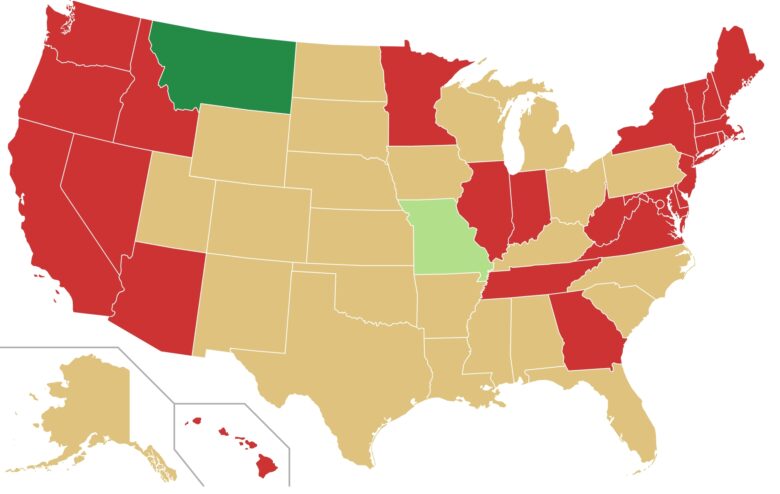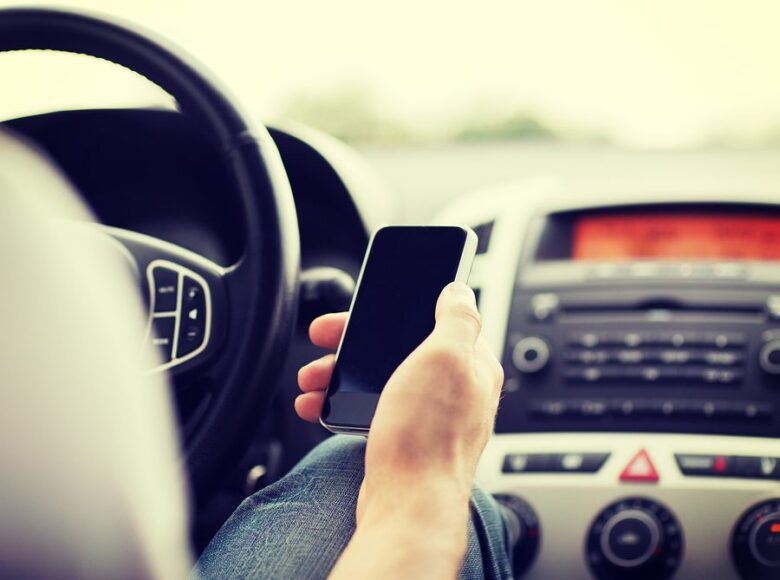There are distractions at every turn in life. Along the way, we need distraction-free moments – this could not be truer than while driving.
As distractions, cell phones are given the most attention, but distractions can be caused by anything that takes our focus away from the road, including distracted thinking.
We will look at different types of driving distractions, as well as ways to encourage ourselves and others to embrace distraction-free practices.
First, however, let’s look at cell phones – they are the dominate visual distraction of our age, and the target of most distracted-driving legislation.
Contents
Understanding Cell Phone Restrictions by State and Area

Source: en.wikipedia.org
Consider this: The National Highway Traffic Safety Administration (NHTSA) equates five seconds of texting while driving at 55 MPH to driving the length of a football field with our eyes closed.
Shocking statistics like this have prompted states to adopt increasingly prohibitive device-use laws. Simply knowing your state’s particular laws can prevent costly fines. More importantly, if you are involved in an accident while using a cell phone (even if the fault is not yours), you can be held accountable.
Accident law groups with a presence in various states can be a great resource for understanding cell phone-use laws state-by-state; your rights and responsibilities; and how to dispute fault in a car accident.
This knowledge is particularly valuable for people whose job requires a lot of driving, either through busy traffic centers or across state lines. Duejustice.com has a national reach and can provide legal clarity on these matters.
For example, Kentucky has a ban on texting while driving, but not a stricter hand-held ban for drivers 18 and older. Virginia and West Virginia do have a hand-held ban. An interstate delivery driver can break the law as soon as he crosses the border.

Source: scottsdalemuffler.com
Three Distraction Types
Visual Distractions
Phone screens; billboards and attractions; a report we need to read before work; even other accidents – these and other visual distractions just keep piling up. That one moment our eyes turn away from the road could be the moment somebody merges into our lane without seeing us. After the accident, even if the other driver was at fault, it would be much harder to prove unmistakably if we too were distracted in that moment.
Manual Distractions
This includes any action that inhibits the physical aspects of driving. Eating and drinking; fixing our hair and makeup; adjusting a child’s car seat–these are all activities we tend to do instinctively as if we were still parked in our own driveway and not moving at high speeds. It is better, even when late for work, to safely stop and park and take care of these matters. Otherwise, a single distracted moment can result in a devastating accident.
Cognitive Distractions
Visual and manual distractions can also be considered forms of cognitive distractions because they are clearly taking our minds off the road. However, suppose we aren’t engaged in rubbernecking or one-handed eating. There can still be enough distraction in our minds–perhaps a conversation we are having with our passengers (or an argument); or else something even more abstract, like a stressful situation that has been affecting our mental health.
Mental health issues are often under-regarded as a driving danger, but they are often the cause of cognitive disconnect, which can slow reaction time; as well as road rage, which can instigate aggressively dangerous reactions.

Ways to Improve and Promote Distraction-Free Driving
There are a number of effective ways to improve our focus on the road and encourage the same in those we know.
For Ourselves – first of all, as stated before, simply knowing our state’s laws regarding cell phone use will plant the seed of safety in our thinking. We’ll be less inclined to “just avoid fines” and more considerate of what traffic officers must face on a daily basis.
Another suggestion would be to voluntarily take a defensive driving course from time to time. Why wait until we are ordered to take a defensive driving class when we could voluntarily reengage ourselves with the fundamentals of traffic safety?
There are many recertification and further education requirements for our jobs and hobbies. It’s time to take the same approach to driving.
For Our Family – Sure there are apps that can restrict cellphone use for teens while driving. Some apps will shut off texting capabilities at certain speeds. However, this doesn’t really get to the heart of the problem: a teenager’s susceptibility to distraction. Furthermore, it’s easy enough, if they are driving with friends, to use a different phone.
Basically, trust issues between parents and teenagers creates further distraction. Communication that conveys respect in every direction is the better course of action. Parents respect their children’s privacy; children respect their parents’ rules; and, most importantly, teenagers respect the laws and dangers of the road. Help them see for themselves why distraction-free driving is vital.
Also, whatever we expect from our children, we should expect from ourselves. Are we too habitually talking or texting while driving? Do we excuse ourselves because we are older and more experienced drivers? Teenagers won’t see it that way. They’ll see that, since we have done it accident-free in the past, it must not be a big deal.
For Our Employees – Everyone feels pressure to cut corners at work from time-to-time. This is especially true for workers who drive a lot. Whether a driver needs to clarify a direction, or just fight the boredom of the road, they should be given ample time and resources to safely solve these problems. That can mean quality GPS systems that require no hand-held devices; or additional time allotted for breaks on road trips.
Furthermore, depending on where an employee must drive, they should be educated on all state and citywide cell phone use laws, so they don’t unknowingly enter an area that has a complete cell phone ban in place.

Source: hiroad.com
Recognize Distractions and Save Lives
Distractions can come from anywhere–not just cellphones. Often, they don’t even seem like distractions because there are no visual or manual components behind them.
Defensive driving means recognizing all forms of distraction, including the preoccupations we carry with us. When we can truly turn our cars into distraction-free zones, we give ourselves the best chance to drive lawfully and accident-free.
